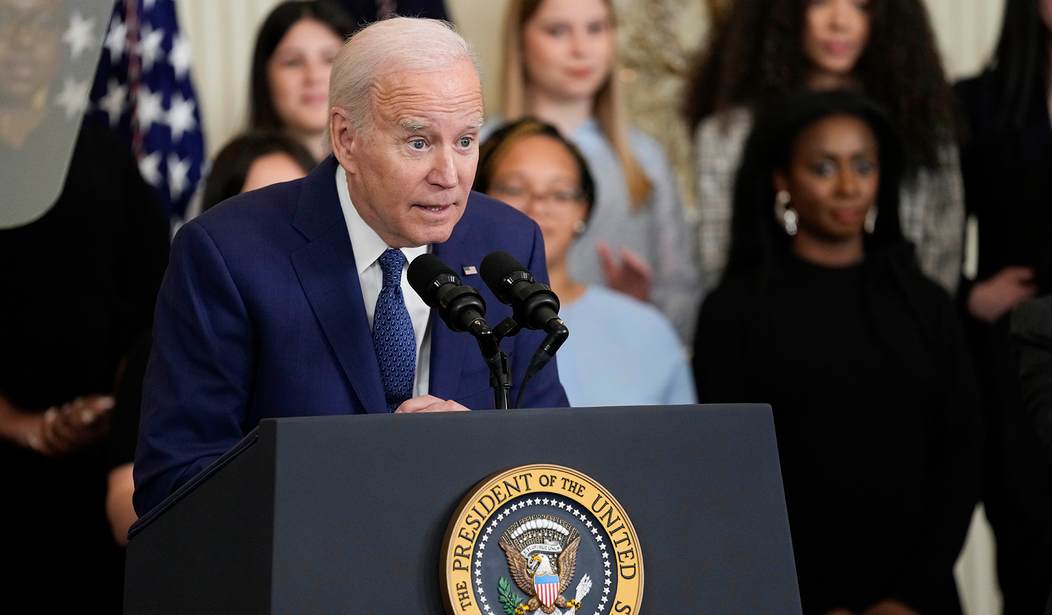Editor's note: This piece was coauthored by Ohio state Sen. George Lang and Dr. Tom Rastin.
In 2020, presidential candidate Joe Biden proclaimed under a Biden Administration, “Milton Friedman is no longer in charge.” Unfortunately, this is a campaign promise President Biden has lived up to and millions of Americans now regret deeply as our economy and prosperity is on the road to ruin. Biden policy is devoid of market-based economic principles Freidman advocated for: an economy where competition, entrepreneurs, corporations, and consumers decide what and how much we produce, not the federal government; where freedom and the rule of law takes precedent; and, where a disciplined Federal Reserve helps minimize inflation and government spending is rationally tied to economic growth and fiscal stability.
Instead, there is bragging about massive job creation. In actuality, total U.S. jobs at the end of February 2023 was about 160 million, barely larger than the pre-COVID-19 high of 158.8 million in December of 2019. Now, we face 13 problems we are convinced would have been greatly reduced if 1600 Pennsylvania Avenue embraced the economics of Milton Friedman:
1. The current U.S. National Debt is just over $31.64 trillion, which is about $94,552 per American man, woman, and child, just under $247,000 per American taxpayer and stands at 122% of U.S. Gross Domestic Product (GDP), a level not seen since the end of World War II. Most concerning is the U.S. National Debt has grown by more than $18.1 trillion (almost 150% and roughly $1.5 trillion annually) from $13.5 trillion at the end of 2010. This level of government spending is out of control and unsustainable. A recent Congressional Budget Office report noted that interest on the national debt alone could reach $1 trillion annually and be a larger budget item than national defense by 2030 or sooner if we don’t address this absurd rate of highly irresponsible and dangerous federal government growth.
2. Total U.S. student loan debt, mostly financed by the federal government, now totals $1.75 trillion (about double from 10 years ago) with more than half of students leaving college with student loan debt.
Recommended
3. U.S. credit card debt in the last three months of 2022 increased by $61 billion to an all-time record high of $986 billion.
4. In order to fight inflation, the U.S. Federal Reserve Bank has increased the U.S. federal funds rate eight times since March of 2022, bringing the rate to 4.83% in late March, up from 0.33% a year ago. The negative impact on home and automobile sales is obvious and painful.
5. The U.S. Federal Reserve Balance Sheet is in shambles (going from under $900 billion in December of 2007 in the early stages of The Great Recession to $4.5 trillion by January of 2017 to $7.4 trillion by January of 2021 and just under $9 trillion by April of 2022). The Fed’s more than doubling of the U.S. money supply under Presidents Trump and Biden to battle the pandemic is the primary cause of current U.S. inflation and should be reduced to effectively fight inflation, while leaving interest rates to be determined by the market.
6. President Biden signed almost 150 executive orders, most regulatory in nature during his first three months in office and continues to regulate the U.S. economy at a rapid pace. We are especially troubled regarding his anti-U.S. energy policies stunting U.S. growth and stability in the production of clean U.S. coal, petroleum, and natural gas, while directly or indirectly promoting less-clean sources from often unfriendly countries, compromising national security.
7. The U.S. has experienced record levels of undocumented migration across our southern border since January of 2021. We need an enforceable border and a market-driven immigration policy that grows the safety, security, and productivity of the American economy.
8. Much of our foreign and trade policy seems to favor countries that openly speak of doing the U.S. harm militarily, while destroying jobs in the U.S., for reasons that make little to no sense economically or strategically.
9. There is a growing lack of understanding of and confidence in the American competitive free enterprise system by those privileged enough to be born here. Millions of people currently enter the U.S. legally and under questionable conditions. They seek the "American Dream“ often at great risk and peril, to live and to raise a family in what they believe to be the best place in the world. Americans by birth, especially our youth today, need to reflect on why these immigrants hold this country so dear, which is in direct contradiction to the oft-communicated view that America is not a land of opportunity and at core is a racist land. Both cannot be true. America may not be perfect, but objectively the migration at our borders shows that it is the best.
10. For 40 years pre-COVID-19 pandemic, the U.S. federal budget was roughly 20% of GDP. The U.S. federal budget has now ballooned to 25% of GDP.
11. U.S. entrepreneurs and small business owners are losing confidence in the U.S. economy with the National Federation of Independent Business Optimism Index near an all-time low in 2023.
12. President Biden’s $6.8 trillion budget proposes new tax rates of 28% for corporations, 39.6% for individuals, 39.6% for capital gains, and a 25% minimum wealth tax on some millionaires and billionaires. Taxing the wealthy and productive has never been a sound way to move an economy forward. Especially considering the Tax Foundation’s most recent analysis of the most current IRS tax data shows the top 1% of all American taxpayers paid 42.3% of all federal individual income taxes.
13. The total government share of overall U.S. GDP is up from just under 8% in 1900 to more than 40% today according to the U.S. Congressional Budget Office. Most alarming is the fact that the federal government is now roughly 66% larger than local and state government combined.
Recently, the price of crude oil surpassed $81 a barrel, gold is above $2,040 an ounce and the Federal Reserve of Atlanta is predicting U.S. GDP will grow just 1.7% for Q1 2023. The growth and influence of the U.S. government on our economy is clearly out of control. American fiscal and monetary stability is being questioned here and around the world. And to make matters worse, a looming recession will handcuff the ability of this once market-driven economy to heal itself if current trends are not reversed.
Dr. Timothy G. Nash is director of the McNair Center at Northwood University, Mr. George Lang is an Ohio State Senator, and Dr. Tom Rastin is a retired business executive from Ohio.

























Join the conversation as a VIP Member